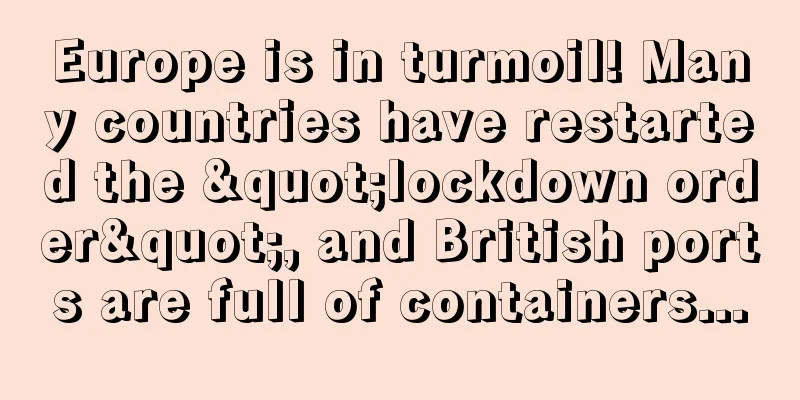Sales have returned to pre-epidemic levels! ZARA still can't relax

|
Inditex, the parent company of fast fashion retailer ZARA, said in its financial report this week that ZARA 's revenue has now returned to pre- epidemic levels.
In addition to ZARA, Inditex also owns clothing brands Pull&Bear and Massimo Dutti . According to Inditex's report, its revenue from May to July reached US $8.25 billion, a 7% increase over the same period in 2019 , and Inditex also regained its position as the world's largest clothing retailer.
Zara 's physical stores still make up a major part of its business, with increased foot traffic boosting sales . According to Inditex , 99 % of its stores have now reopened.
Meanwhile, its e-commerce sales continue to grow . The company expects online business to exceed 25% of total sales by the end of fiscal 2021. In 2018, only 12% of total sales came from online business .
Zara 's in -store self-collection service allows it to recoup sales faster than fast-fashion peers such as H&M , which have more limited logistical flexibility .
In contrast, H&M's recovery has been much slower. In its latest financial report, H&M Group's sales increased by 9% year-on-year to US$6.46 billion. However, its net sales were still down 11% from the same period in 2019.
ZARA 's early investment in online fulfillment has accelerated its sales recovery to a certain extent . In fact , before the epidemic, ZARA had already provided in-store pickup services to customers. In 2018, the company launched " self-pickup points " specifically for picking up online orders. In 2020, Inditex also announced that it would spend $3 billion to develop technology to further improve its online and offline store shopping experience.
This novel fulfillment service is still lacking in H&M stores . Although H&M currently allows customers to check the inventory of their local store, there are still no official self-collection points in stores in the United States that provide in-store pickup services.
ZARA 's sales recovery shows that early investment in technology integration is an effective long-term strategy. For traditional offline brands like ZARA , this means not only increasing investment in e-commerce, but also refreshing the design of physical stores, such as more novel store formats and integrated digital signage .
Zara still has some way to go in building a modern e-commerce experience . Although it has launched mobile applications in recent years , its desktop website experience is still poor , and shoppers cannot filter products by criteria such as price.
In addition, although ZARA 's sales have returned to pre-pandemic levels, the company still faces competitive pressure from online fast fashion retailers such as SHEIN and Blushmark . Independent website ZARA |
<<: Amazon and Morrisons to expand same-day delivery service in UK
>>: Sendcloud Completes US$177 Million Series C Financing
Recommend
What is ShippyPro? ShippyPro Review, Features
<span data-docs-delta="[[20,{"gallery"...
What is BRIGHT DATA? BRIGHT DATA Review, Features
<span data-docs-delta="[[20,{"gallery"...
What is マツモトキヨシ Formula? MATSU Formula Review, Features
Matsuoka Yoshikoshi (Matsumoto Kiyoshi) is the lar...
Temu, who was racing all the way, slowed down
Since its launch in the United States in Septembe...
580,000 units sold in the U.S., another product was urgently removed from multiple platforms including Amazon!
Product safety issues have always been a top prio...
75% of clothing is purchased online, and Mastercard believes that online clothing is on the rise
She noted: "Nearly three-quarters of all app...
What is 印泰跨交? 印泰跨交Review, Features
Yintai Cross-border (Shenzhen Yintai Cross-border ...
"Smart Home" is very popular in the Russian market!
The continuous development of science and technol...
What is mgs-e-tech? mgs-e-tech Review, Features
mgs-e-tech is a professional Bluetooth headset com...
Product selection: Moscow coffee is in the greatest demand! Instant coffee is the best seller!
On the occasion of International Coffee Day on Oc...
Switzerland ranks first in e-commerce index, surpassing China and the United States
Last year, Swiss e-commerce grew by 25.8% to 13.3...
What is tool4seller? tool4seller Review, Features
tool4seller is an Amazon seller tool that automati...
What is Snapchat? Snapchat Review, Features
Snapchat is a photo-sharing app developed by two ...
What is Viva Wallet? Viva Wallet Review, Features
<span data-docs-delta="[[20,{"gallery"...
What is Longgang Logistics Network? Longgang Logistics Network Review, Features
Longgang Logistics Network focuses on the diversi...









